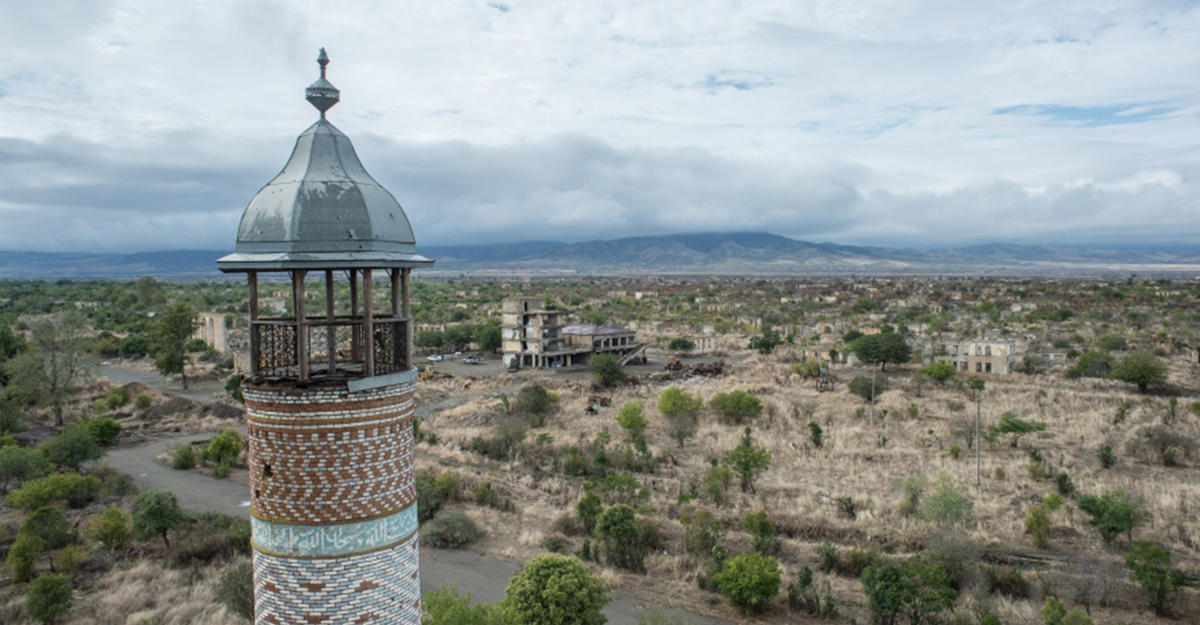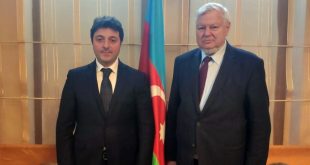
The process to illegaly settle Lebanese-Armenian in Azerbaijan’s occupied Nagorno-Karabakh region has started.
On September 11, the “head” of the so-called regime set up in Nagorno-Karabakh shared a video post on his Facebook page about settlement of Lebanese Armenians in Azerbaijan’s internationally-recognized territory after the deadly explosion in Beirut last month.
The leader of the separatists said the first Lebanese-Armenian families are already being approved in Nagorno-Karabakh and reaffirmed that the so-called regime is interested in preserving the Lebanese-Armenian “colony”.
The separatist leader had voiced his readiness to receive Armenians, during the phone conversation with the Catholicos of the Great House of Cilicia Aram I who is based in Lebanon’s capital-Beirut after the explosion in that city. He offered the settling of 150 Lebanese-Armenian families in Nagorno-Karabakh.
The Armenian military-political leadership seizes every opportunity to illegally settle Armenians in Azerbaijan’s occupied territories in a bid to artificially change the demographics of the region and saw the recent deadly blast in Beirut as another opportunity to illegally settle Armenians in occupied Nagorno-Karabakh and the adjacent seven regions.
The illegal settlement of Armenians in Nagorno-Karabakh is part of Armenia’s annexation policy under the guise of “repatriation” and “humanitarian assistance”.
It should be noted that on August 15, Azerbaijan’s Foreign Ministry shared a satellite image of a new illegal settlement in Azerbaijan’s occupied Kalbajar region. In a press release issued jointly with Azerbaijan’s satellite operator Azercosmos, the ministry said that the monitoring carried out via the «Azersky» satellite has revealed that a residential complex, which began to be built in Kalbajar in late 2019, now consists of 15 houses.
“The speed and the continuation of construction work make clear that this settlement will be further expanded. Thus, if in January 2020, 6 houses were completed, in March – 10 houses, in April – 14 houses, and in August this figure reached 15,” the ministry said.
The ministry said that the settlement was part of an “artificial settlement policy of Armenia”, adding that new settlements were constructed in the occupied territories of Azerbaijan, including the residential complex “Aracamux” in Jabrayil and “Ariavan” in Lachin region, as well as in Zangilan and Khanlig village of Gubadli region.
“This illegal activity is aimed at continuing and strengthening the occupation of the occupied Nagorno-Karabakh and surrounding regions of Azerbaijan, the annexation of our territories and the prevention of the return of Azerbaijani IDPs to their homes and properties,” the statement reads.
It should be noted that Armenia had earlier moved thousands of Syrian Armenians to the occupied Nagorno-Karabakh region of Azerbaijan since the start of the Syrian war. According to UNHCR figures, at least 15,000 Syrians have found refuge in Armenia since the start of the crisis.
“Before the conflict, the estimated number of ethnic Armenians in Syria was about 100,000. More than 60,000 of them settled in Aleppo. In 2013, the number of Syrian Armenians fleeing reached 11,000 and by August 2015, over 15,000 Armenians had been reported to be seeking asylum in Armenia. Many who have not made it to Armenian cities have now settled in the disputed Armenian enclave of Nagorno-Karabakh in Azerbaijan,” according to BBC report.
According to the source of the Armenian Government as of January 1, 2020, about 15,000 Armenians have been received from Syria.
In 2012, twelve Armenian families were moved from Syria to the occupied Lachin region of Azerbaijan.
Azerbaijan’s former Foreign Minister Elmar Mammadyarov also touched upon the resettlement of Armenian refugees from Syria by Armenia in the illegally occupied territories of Azerbaijan in 2008.
“Attempts to pursue a settlement policy and purposefully change the demographic composition of the occupied territories are a gross violation of international humanitarian law,” Mammadyarov had said.
Azerbaijan and Armenia are locked in a conflict over Azerbaijan’s Nagorno-Karabakh breakaway region, which along with seven adjacent regions was occupied by Armenian forces in a war in the early 1990s. More than 20,000 Azerbaijanis were killed and around one million were displaced as a result of the large-scale hostilities.
The OSCE Minsk Group co-chaired by the United States, Russia and France has been mediating the Armenian-Azerbaijani conflict since the signing of the volatile cease-fire agreement in 1994. The Minsk Group’s efforts have resulted in no progress and to this date, Armenia has failed to abide by the UN Security Council resolutions (822, 853, 874 and 884) that demand the withdrawal of Armenian military forces from the occupied territories of Azerbaijan.
 Oval Useful news from Azerbaijan and Caucasus
Oval Useful news from Azerbaijan and Caucasus


